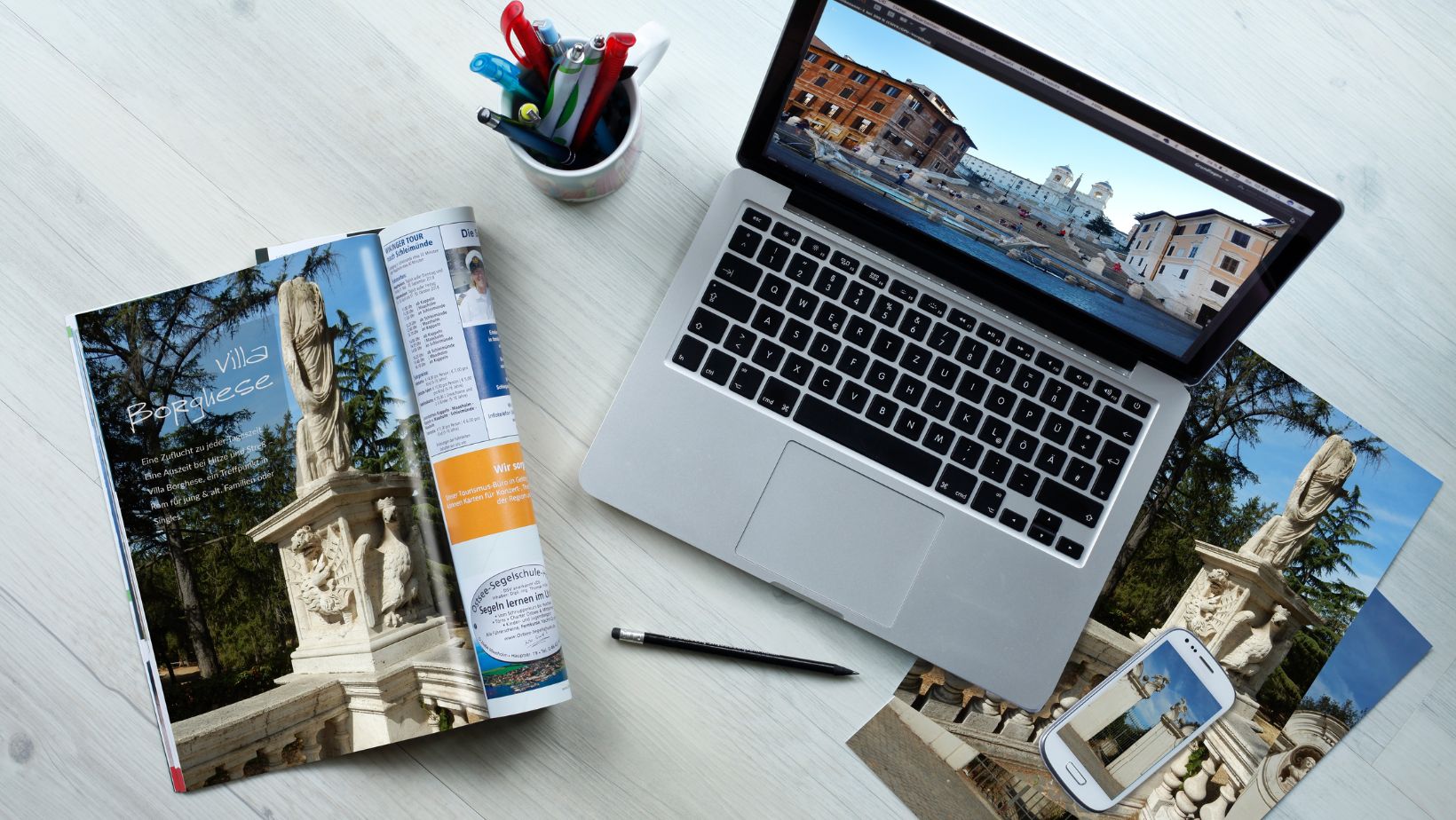
Starting a local magazine can be a powerful way to bring a community together and spotlight local stories. Financially speaking, it can also create a unique platform for attracting advertisers. But turning that vision into a printed reality takes more than just creativity. You need some planning from a business perspective.
7 Steps to Take
If you’ve always dreamed of publishing something tangible and meaningful in your community, a local magazine can be the perfect way to build connections while carving out a place for your voice.
Here’s how to make it happen, from idea to inbox (or mailbox).
Begin With a Strong Local Niche
Your first step is figuring out exactly who your magazine is for. You don’t want to be everything to everyone – that’s a fast way to become forgettable. Instead, narrow your focus. Ask yourself, what specific niche does your community need?
Maybe it’s hyperlocal coverage of the art scene or a family-focused publication with parenting tips and kid-friendly event calendars. Maybe it’s a business-focused quarterly for professionals or a culture-heavy lifestyle mag that features local chefs, artists, and entrepreneurs.
Once you identify your niche, you’ll be able to design your brand, shape your content, and build an audience that actually cares.
Build a Content Plan That Makes Sense
Content is what fills the pages, but consistency is what keeps readers coming back. You’ll want to plan regular features or columns that give structure to every issue – think restaurant reviews, small business profiles, calendar pages, Q&As with local leaders, photo spreads of events, or how-to columns.
You can also mix shorter, visual-heavy content with longer features. And keep a consistent tone that’s professional and simultaneously personable. (Local magazines shine when they’re polished yet approachable.)
As a side note, don’t try to do all the writing yourself. If you’re not already tapped into the local writing or photography scene, post in local groups, colleges, or freelance communities to find contributors who know the area and want to be part of something new.
Choose the Right Print Format
Even in a world full of digital content, print still has weight – literally and figuratively.

A physical magazine gives people something they can hold, flip through, and come back to. But you’ll need to be smart about your printing choices.
One of the best options for local magazines is saddle stitch booklet printing. It’s affordable, clean, and looks professional – especially for publications that fall within the 8 to 64 page range. This type of binding (where pages are folded and stapled along the spine) gives your magazine a polished finish without the bulk or cost of perfect binding.
For best results, work with a printing partner who specializes in booklets and can help you choose the right paper weight, cover stock, and finishes based on your budget and brand.
Monetize With Advertising
Most local magazines rely heavily on advertising revenue. The good news? Local businesses want to support local media – especially if you’re reaching their ideal customers. But you’ll need to make it easy for them to say yes.
Create a simple media kit that outlines your magazine’s purpose, audience demographics, distribution channels, and ad pricing. Include design specs and deadlines. Offer different ad sizes and placement options at various price points.
Make sure you also offer packages that include print + digital exposure. Maybe a full-page ad comes with a sponsored Instagram post or a feature on your website. Bundle it all for better value and higher sales.
Distribute Where Your Audience Already Goes
You’ve got a stack of fresh magazines – now where do they go?
Your distribution strategy should reflect your readership. If you’re targeting young families, you want copies at preschools, play cafes, pediatrician offices, and libraries. If your audience is downtown professionals, aim for co-working spaces, coffee shops, boutique hotels, and business lobbies.
Make a list of local businesses who’d love the foot traffic, and ask if you can leave a small stack of magazines on their counter. Most will say yes – especially if you include them in your content at some point.

You can also offer subscriptions for a small fee to generate additional income and ensure loyal readers get every issue directly.
Build a Recognizable Brand
Your brand isn’t just your logo – it’s your tone, your values, and the feeling people get when they pick up your magazine. Everything from your font choices and color palette to your photography style should feel cohesive and aligned with your audience.
Do everything you can to invest in strong design. If you’re not a designer yourself, hire someone who can help create a professional layout and visual identity.
Create a Production Schedule You Can Stick To
Publishing regularly requires discipline. Even if you’re starting quarterly, you’ll need a clear schedule that includes deadlines for content submission, editing, layout, printing, and distribution. Back it out from your print date and build in padding for unexpected delays (because there will be delays).
Achieving Sustainable Growth
A lot of local magazines crash and burn because they try to do too much too soon. Don’t overextend yourself. Start with a manageable page count, a small but loyal group of contributors, and a focused audience.
As you grow, you can increase your print run, add new departments, expand to digital formats, or launch special issues. But make sure you’ve built a solid foundation first.


















